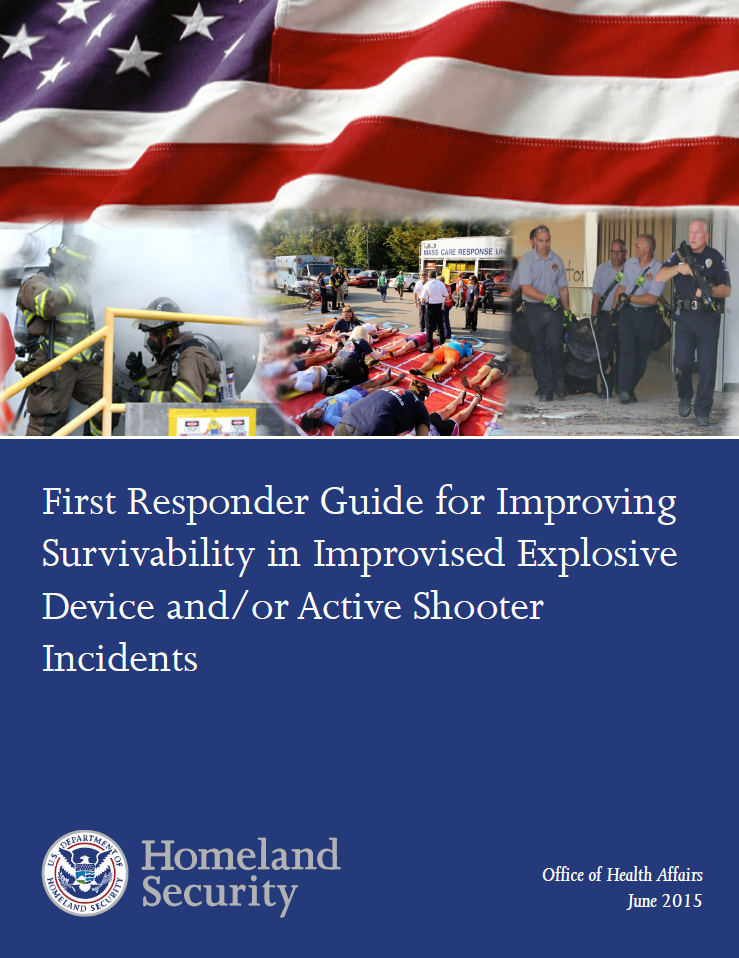Training Tips
Tourniquets
Tourniquets
- Go high or die
- Tighten until bleeding stops
- Mark the time that tourniquet was applied
- Use only TCCC-approved tourniquets, if available
Recovery
Position
Recovery Position
Always ensure that an unconscious person has an open airway to his or her lungs. One way to ensure an open airway is to use a head-tilt, chin-lift technique, lifting the tongue from the back of the throat. The unconscious person can also be shifted to either side so that his or her tongue will not block the airways.
Limited
Equipment
Limited Equipment
You are limited to what you can carry on you while on-duty. Choose equipment wisely and carry the most critical pieces of equipment you may need to stay prepared for a critical incident at any moment.
Hypothermia
Treatment
Hypothermia Treatment
The best method to treat hypothermia is to prevent it. When the body’s temperature lowers and hypothermia occurs, the body’s ability to clot blood diminishes. Keep patients warm, even in warm or hot environments.
Hot
Zone
Hot zone
Where gunfire is still occurring or is likely to start again, threat suppression is the best “medicine”. If you become a victim, you are of no help to the situation. Make sure to always “get off the X” in a hot zone to ensure tactical advantage and safety.
Remember
T.H.R.E.A.T.
Remember T.H.R.E.A.T.
Threat suppression
Hemorrhage control
Rapid extrication to safety (get off the "X")
Assessment by medical personnel
Transport to definitive care (hospital)
Recovery Position
Always ensure that an unconscious person has an open airway to his or her lungs. One way to ensure an open airway is to use a head-tilt, chin-lift technique, lifting the tongue from the back of the throat. The unconscious person can also be shifted to either side so that his or her tongue will not block the airways.
Limited Equipment
You are limited to what you can carry on you while on-duty. Choose equipment wisely and carry the most critical pieces of equipment you may need to stay prepared for a critical incident at any moment.
Hot zone
Where gunfire is still occurring or is likely to start again, threat suppression is the best “medicine.” If you become a victim, you are of no help to the situation. Make sure to always “get off the X” in a hot zone to ensure tactical advantage and safety.
Tourniquets
- Go high or die
- Tighten until bleeding stops
- Mark the time that tourniquet was applied
- Use only TCCC-approved tourniquets, if available
Hypothermia Treatment
The best method to treat hypothermia is to prevent it. When the body’s temperature lowers and hypothermia occurs, the body’s ability to clot blood diminishes. Keep patients warm, even in warm or hot environments.
Remember T.H.R.E.A.T.
Threat suppression
Hemorrhage control
Rapid extrication to safety (get off the "X")
Assessment by medical personnel
Transport to definitive care (hospital)
Printable Resources

TCCC Trauma Bag Recommendations
Are you carrying what is necessary should you find yourself in a critical incident requiring immediate medical attention? Download this list, check your equipment with the list, and share with other law enforcement officers to make sure that you and your fellow officers are prepared!
Download
Are You Prepared?8.5x11

Tourniquet Visor Card
During a critical incident, where is your tourniquet? It is too late to go back to your patrol car or agency. Download, print, and share this poster to remind yourself and your fellow officers to always have their tourniquets on them!
Download
Tourniquet—Lifesaver
This poster emphasizes how tourniquets can save lives. Get trained and be equipped.
Download
Tourniquets Save Lives
This poster emphasizes that death can occur within two minutes from major blood loss.
DownloadeLearning Modules
Submit a Roll Call Drill
Do you have any drills that you or your agency use to practice casualty care principles? Email us your drill at casualtycare@valorforblue.org to help a fellow officer or agency with their casualty care training!
Additional Resources
Hemorrhage Control Overview
This publication provides photos and instruction on how to use hemorrhage control medical supplies such as tourniquets, gauze, and bandages.
First Responder Guide for Improving Survivability
This federal, multidisciplinary first responder guidance translates evidence-based response strategies from the U.S. military’s vast experience in responding to and managing casualties from IED and/or active shooter incidents and from its significant investment in combat casualty care research into the civilian first responder environment. In addition, civilian best practices and lessons learned from similar incidents, both in the United States and abroad, are incorporated into this guidance.
Emergency Trauma Care
These documents present tactical medicine material that may conflict with conventional civilian emergency medical services (EMS) practices. Routine civilian EMS care is not designed to address care for victims in situations where rescue personnel are exposed to an ongoing threat of violence. These documents are specially designed for law enforcement officers who will be the first responders to situations that require balancing both tactical and medical issues.
Applying a Tourniquet
Since the filming of this video the Tactical Combat Casualty Care Committee updated their list of recommended tourniquets to include the following: Combat Application Tourniquet (CAT) Gen 7, Combat Application Tourniquet (CAT) Gen 6, Ratcheting Medical Tourniquet -Tactical (RMT-T), SAM Extremity Tourniquet (SAM-XT), SOF Tactical Tourniquet – Wide (SOFTT-W), Tactical Mechanical Tourniquet (TMT), TX2” Tourniquet (TX2), and TX3” Tourniquet (TX3). Since the filming of this video, Chief David Flory has retired from Hot Springs Arkansas Police Department and is now a Senior Research Associate for the Institute for Intergovernmental Research, and a lead instructor for the VALOR Program
VALOR for Blue Clearinghouse Resources
The Casualty Care Resource Clearinghouse is your one-stop-shop for all VALOR casualty care resources. All the resources available on the other pages can be found here as well as a multitude of others. Check out the Clearinghouse for videos, posters, articles, and more.
Go To The ClearinghouseFrequently Asked Questions
Purchase them in bulk from a vendor that supplies TCCC-approved tourniquets: Combat Application Tourniquet (CAT) Gen 7; Combat Application Tourniquet (CAT) Gen 6; Ratcheting Medical Tourniquet, Tactical (RMT - T); SAM Extremity Tourniquet (SAM - XT); SOF Tactical Tourniquet, Wide (SOFTT - W); Tactical Mechanical Tourniquet (TMT); TX2” Tourniquet (TX2); and TX3” Tourniquet (TX3).
The typical cost for the essential casualty care materials is 25 to 35 dollars per officer.
A go bag is necessary to rapidly deploy medical equipment, ammo, and supplies within the perimeter of a critical incident.
The three most important factors to consider when acquiring a tourniquet are cost, durability, and Tactical Combat Casualty Care (TCCC)-approved.
On your person, you must have your TCCC-approved tourniquet.
In the medical portion of your go bag, you should have:
- Personal protective equipment
- Hemostatic agent
- Modular pressure bandage
- Chest seal
- Medical tape
- Scissors
Improper technique when performing drags and carries of someone wounded in the field can create a delay in care, an increase in the time personnel are exposed on the X, or worsen an injury.
The VALOR Program’s casualty care curriculum and resources are based off the TCCC model. TCCC approves certain brands in the market based on rigorous research and testing on the products, ensuring that they are only endorsing products that will be reliable and effective in the field. Therefore, though there are other products on the market, VALOR features only TCCC-approved products in the toolkit.












